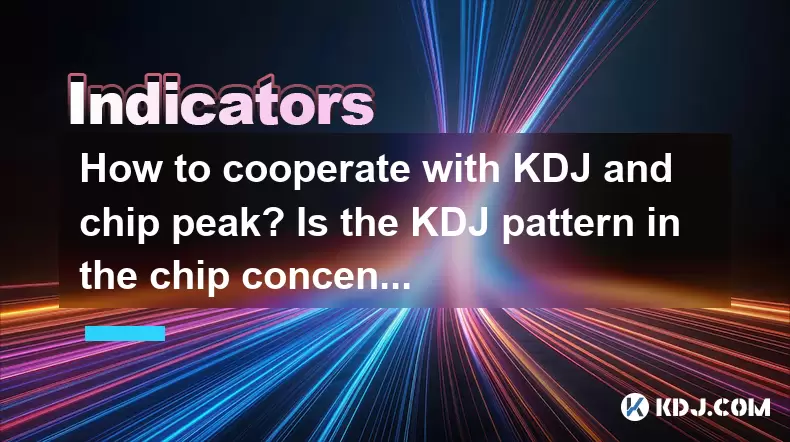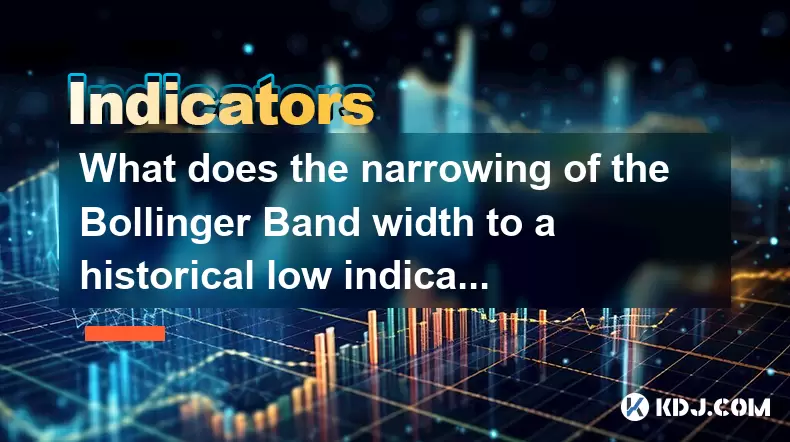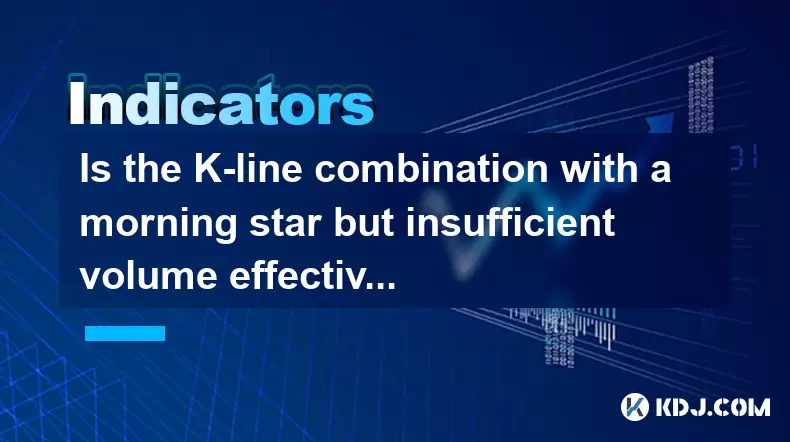-
 Bitcoin
Bitcoin $101,898.5005
-0.75% -
 Ethereum
Ethereum $2,258.1125
-1.07% -
 Tether USDt
Tether USDt $1.0004
0.01% -
 XRP
XRP $2.0178
-2.93% -
 BNB
BNB $624.0243
-1.53% -
 Solana
Solana $134.3298
-0.90% -
 USDC
USDC $0.9999
0.01% -
 TRON
TRON $0.2675
-2.05% -
 Dogecoin
Dogecoin $0.1538
-1.96% -
 Cardano
Cardano $0.5482
-1.11% -
 Hyperliquid
Hyperliquid $35.5636
5.45% -
 Bitcoin Cash
Bitcoin Cash $453.4902
-1.66% -
 Sui
Sui $2.5134
-2.97% -
 UNUS SED LEO
UNUS SED LEO $9.1292
1.77% -
 Chainlink
Chainlink $11.8457
-1.60% -
 Stellar
Stellar $0.2312
-2.73% -
 Avalanche
Avalanche $16.9721
0.29% -
 Toncoin
Toncoin $2.7549
-3.82% -
 Shiba Inu
Shiba Inu $0.0...01081
-1.10% -
 Litecoin
Litecoin $80.8250
-0.71% -
 Hedera
Hedera $0.1374
0.21% -
 Monero
Monero $305.4827
-2.36% -
 Ethena USDe
Ethena USDe $1.0006
0.00% -
 Dai
Dai $1.0000
-0.01% -
 Polkadot
Polkadot $3.2085
-3.12% -
 Bitget Token
Bitget Token $4.0845
-3.13% -
 Uniswap
Uniswap $6.3353
-1.63% -
 Pi
Pi $0.5085
-0.70% -
 Pepe
Pepe $0.0...08913
-3.82% -
 Aave
Aave $232.7090
-0.58%
How to cooperate with KDJ and chip peak? Is the KDJ pattern in the chip concentration area important?
KDJ indicator's three lines (K, D, J) help predict crypto price moves; bullish signals form when K crosses above D in oversold zones.
May 23, 2025 at 01:21 am

Understanding the KDJ Indicator
The KDJ indicator, also known as the Stochastic Oscillator, is a popular technical analysis tool used in the cryptocurrency market to predict price movements. It consists of three lines: the K line, the D line, and the J line. The K and D lines are typically used to generate buy and sell signals, while the J line is an extension that helps in confirming these signals. The KDJ indicator is particularly useful in identifying overbought and oversold conditions in the market.
To use the KDJ indicator effectively, traders often look for specific patterns and crossovers. A bullish signal is generated when the K line crosses above the D line in the oversold region (below 20), while a bearish signal is indicated when the K line crosses below the D line in the overbought region (above 80). The J line can further confirm these signals by being above the K and D lines for bullish trends and below for bearish trends.
Understanding Chip Peak and Concentration Areas
In the context of cryptocurrency trading, the term "chip peak" refers to the price levels at which a significant number of investors bought their cryptocurrencies. These levels are often areas of high resistance or support because many investors will be looking to break even or take profits at these points. The concept of chip concentration areas, therefore, is crucial for understanding market dynamics and potential price movements.
Chip concentration areas can be identified using various tools and data sources, such as on-chain analytics platforms. These areas are where a large percentage of the total supply of a cryptocurrency is held. When the price approaches these levels, it can lead to increased volatility as investors react to these key psychological thresholds.
The Importance of KDJ Patterns in Chip Concentration Areas
The intersection of KDJ patterns and chip concentration areas is a critical point for traders. When a KDJ pattern forms within a chip concentration area, it can significantly enhance the reliability of the trading signal. This is because the chip concentration area represents a level of interest for many investors, and the KDJ pattern can indicate whether the market sentiment is strong enough to break through these levels.
For instance, if the KDJ indicator shows a bullish crossover (K line crossing above the D line) within a chip concentration area, it suggests that the market momentum might be strong enough to overcome the resistance at that level. Conversely, a bearish crossover (K line crossing below the D line) in a chip concentration area could signal that the market might not be able to sustain its current price level and could retreat.
Strategies for Cooperating with KDJ and Chip Peak
To effectively cooperate with KDJ patterns and chip peak areas, traders can follow these strategies:
Identify Key Chip Concentration Areas: Use on-chain analytics tools to pinpoint where the majority of the cryptocurrency's supply is held. These areas will be crucial for your trading decisions.
Monitor KDJ Indicators: Keep a close eye on the KDJ indicator, especially around the identified chip concentration areas. Look for bullish or bearish crossovers that occur within these zones.
Confirm Signals with Volume: Always confirm KDJ signals with trading volume. High volume during a KDJ crossover in a chip concentration area increases the likelihood of a successful trade.
Set Appropriate Stop-Loss and Take-Profit Levels: Given the potential volatility around chip concentration areas, it's essential to set stop-loss and take-profit levels to manage risk effectively.
Practical Example of KDJ and Chip Peak Cooperation
Let's consider a practical example to illustrate how to cooperate with KDJ and chip peak areas:
Step 1: Identify Chip Concentration Area: Using an on-chain analytics tool, you find that a significant amount of Bitcoin is held at the $30,000 price level.
Step 2: Monitor KDJ Indicator: You observe the KDJ indicator on your trading platform. The K line is currently below the D line, and both are in the oversold region (below 20).
Step 3: Wait for Bullish Crossover: As the price approaches the $30,000 level, you notice the K line crossing above the D line, indicating a bullish signal. The J line is also above the K and D lines, confirming the signal.
Step 4: Confirm with Volume: You check the trading volume and see that it is significantly higher than average, suggesting strong market interest.
Step 5: Enter the Trade: Based on the KDJ bullish crossover in the chip concentration area and high volume, you decide to enter a long position on Bitcoin.
Step 6: Set Risk Management: You set a stop-loss just below the $30,000 level to limit potential losses and a take-profit level at a resistance point above the current price.
Using KDJ and Chip Peak for Different Time Frames
The effectiveness of combining KDJ patterns with chip peak areas can vary depending on the time frame you are trading. On shorter time frames, such as 1-hour or 4-hour charts, these signals can be more sensitive to market noise. However, they can still provide valuable entry and exit points for short-term trades.
For longer time frames, such as daily or weekly charts, the signals from KDJ patterns in chip concentration areas tend to be more reliable and less affected by short-term fluctuations. This makes them ideal for swing trading or position trading, where holding periods are longer.
Adjusting KDJ Settings for Different Cryptocurrencies
Different cryptocurrencies may require different settings for the KDJ indicator to achieve optimal results. For highly volatile cryptocurrencies, you might want to adjust the KDJ periods to be shorter to capture more signals. Conversely, for less volatile assets, longer periods might be more suitable to filter out noise and focus on significant trends.
Here's how you can adjust the KDJ settings on a typical trading platform:
Step 1: Access Indicator Settings: Open your trading platform and navigate to the indicator settings for the KDJ.
Step 2: Adjust Periods: The default settings for KDJ are often 9, 3, and 3 for the K, D, and J periods, respectively. For more volatile cryptocurrencies, you might reduce these to 5, 3, and 3. For less volatile assets, you might increase them to 14, 3, and 3.
Step 3: Apply Changes: After adjusting the settings, apply the changes and observe how the KDJ indicator behaves on your chosen cryptocurrency chart.
Step 4: Monitor Performance: Keep an eye on the performance of the adjusted KDJ indicator and fine-tune as necessary based on the specific characteristics of the cryptocurrency you are trading.
Frequently Asked Questions
Q1: Can the KDJ indicator be used alone for trading decisions?
While the KDJ indicator can provide valuable signals, it is generally recommended to use it in conjunction with other indicators and analysis methods to increase the reliability of your trading decisions. Combining it with tools like moving averages, RSI, or volume analysis can provide a more comprehensive view of the market.
Q2: How often should I check for chip concentration areas?
It is advisable to check for chip concentration areas regularly, especially before entering or exiting a trade. These areas can shift over time as the market evolves, so staying updated can help you make more informed trading decisions.
Q3: Are there any cryptocurrencies where KDJ and chip peak cooperation works better?
The effectiveness of KDJ and chip peak cooperation can vary across different cryptocurrencies. Generally, it works well with cryptocurrencies that have high liquidity and significant on-chain data available, such as Bitcoin and Ethereum. For less liquid or newer cryptocurrencies, the data might be less reliable, affecting the accuracy of the signals.
Q4: Can KDJ patterns in chip concentration areas be used for all trading styles?
While KDJ patterns in chip concentration areas can be useful for various trading styles, they are particularly effective for swing trading and position trading due to their longer-term reliability. For day trading, these signals might be too slow to react to rapid market changes, so traders might need to use additional short-term indicators.
Disclaimer:info@kdj.com
The information provided is not trading advice. kdj.com does not assume any responsibility for any investments made based on the information provided in this article. Cryptocurrencies are highly volatile and it is highly recommended that you invest with caution after thorough research!
If you believe that the content used on this website infringes your copyright, please contact us immediately (info@kdj.com) and we will delete it promptly.
- VanEck, Pudgy Penguins, and Nasdaq: A New York Minute on Crypto's Big Moves
- 2025-06-24 01:05:12
- Ripplecoin Cloud Mining: Earn Daily Crypto Rewards?
- 2025-06-24 00:25:13
- SEI Price Prediction: Crypto Analyst Sees Potential Jump to $0.30!
- 2025-06-24 01:05:12
- Dogecoin, Cardano, and Crypto Security: Navigating the Wild West
- 2025-06-24 00:45:12
- Dogecoin Price Analysis and Ozak AI: Riding the Crypto Wave in Style
- 2025-06-24 00:45:12
- Neo Pepe Presale: The Next Big Meme Coin?
- 2025-06-24 00:32:08
Related knowledge

How to interpret that the time-sharing chart shows "volume and price rise together" but the MACD red column shortens?
Jun 24,2025 at 01:08am
Understanding the Concept of 'Volume and Price Rise Together'In cryptocurrency trading, when a time-sharing chart shows that both volume and price rise together, it is typically interpreted as a sign of strong buying pressure. This means more traders are entering long positions, pushing the price higher while increasing the trading volume. This phenomen...

Is it contradictory that the moving average system is arranged in a bullish pattern but the DMI shows a decline in trend strength?
Jun 23,2025 at 11:43pm
Understanding the Moving Average and DMI RelationshipIn cryptocurrency trading, technical analysis plays a crucial role in identifying potential trends and making informed decisions. Two of the most commonly used indicators are the Moving Average (MA) and the Directional Movement Index (DMI). While both tools aim to provide insight into market direction...

How to interpret that the Williams indicator quickly turns back in the overbought area but does not fall below the 50-axis?
Jun 24,2025 at 02:01am
Understanding the Williams %R Indicator in Cryptocurrency TradingThe Williams %R indicator, often referred to as Williams Percent Range, is a momentum oscillator used by traders to identify overbought or oversold conditions in financial markets, including cryptocurrency. It ranges from 0 to -100, where values above -20 are considered overbought and thos...

What is the significance of the gap formed by the gap opening not being filled within five days?
Jun 23,2025 at 09:42pm
Understanding Gaps in Cryptocurrency TradingIn the world of cryptocurrency trading, a gap refers to a situation where the price of an asset jumps from one level to another without any trading activity occurring between those two levels. This often happens over weekends or holidays when the market is closed, and significant news or events occur that impa...

What does the narrowing of the Bollinger Band width to a historical low indicate?
Jun 24,2025 at 02:35am
Understanding Bollinger Bands and Their Role in Technical AnalysisBollinger Bands, developed by John Bollinger in the 1980s, are a popular technical analysis tool used to measure market volatility. They consist of three lines: a simple moving average (SMA) in the center, typically over a 20-period setting, and two outer bands that are set at a standard ...

Is the K-line combination with a morning star but insufficient volume effective?
Jun 24,2025 at 02:49am
Understanding the Morning Star K-line PatternThe morning star is a classic candlestick pattern indicating a potential reversal from a downtrend to an uptrend. It consists of three candles: a large bearish candle, followed by a small-bodied candle (often a doji or spinning top), and then a large bullish candle that closes within the range of the first ca...

How to interpret that the time-sharing chart shows "volume and price rise together" but the MACD red column shortens?
Jun 24,2025 at 01:08am
Understanding the Concept of 'Volume and Price Rise Together'In cryptocurrency trading, when a time-sharing chart shows that both volume and price rise together, it is typically interpreted as a sign of strong buying pressure. This means more traders are entering long positions, pushing the price higher while increasing the trading volume. This phenomen...

Is it contradictory that the moving average system is arranged in a bullish pattern but the DMI shows a decline in trend strength?
Jun 23,2025 at 11:43pm
Understanding the Moving Average and DMI RelationshipIn cryptocurrency trading, technical analysis plays a crucial role in identifying potential trends and making informed decisions. Two of the most commonly used indicators are the Moving Average (MA) and the Directional Movement Index (DMI). While both tools aim to provide insight into market direction...

How to interpret that the Williams indicator quickly turns back in the overbought area but does not fall below the 50-axis?
Jun 24,2025 at 02:01am
Understanding the Williams %R Indicator in Cryptocurrency TradingThe Williams %R indicator, often referred to as Williams Percent Range, is a momentum oscillator used by traders to identify overbought or oversold conditions in financial markets, including cryptocurrency. It ranges from 0 to -100, where values above -20 are considered overbought and thos...

What is the significance of the gap formed by the gap opening not being filled within five days?
Jun 23,2025 at 09:42pm
Understanding Gaps in Cryptocurrency TradingIn the world of cryptocurrency trading, a gap refers to a situation where the price of an asset jumps from one level to another without any trading activity occurring between those two levels. This often happens over weekends or holidays when the market is closed, and significant news or events occur that impa...

What does the narrowing of the Bollinger Band width to a historical low indicate?
Jun 24,2025 at 02:35am
Understanding Bollinger Bands and Their Role in Technical AnalysisBollinger Bands, developed by John Bollinger in the 1980s, are a popular technical analysis tool used to measure market volatility. They consist of three lines: a simple moving average (SMA) in the center, typically over a 20-period setting, and two outer bands that are set at a standard ...

Is the K-line combination with a morning star but insufficient volume effective?
Jun 24,2025 at 02:49am
Understanding the Morning Star K-line PatternThe morning star is a classic candlestick pattern indicating a potential reversal from a downtrend to an uptrend. It consists of three candles: a large bearish candle, followed by a small-bodied candle (often a doji or spinning top), and then a large bullish candle that closes within the range of the first ca...
See all articles
























































































